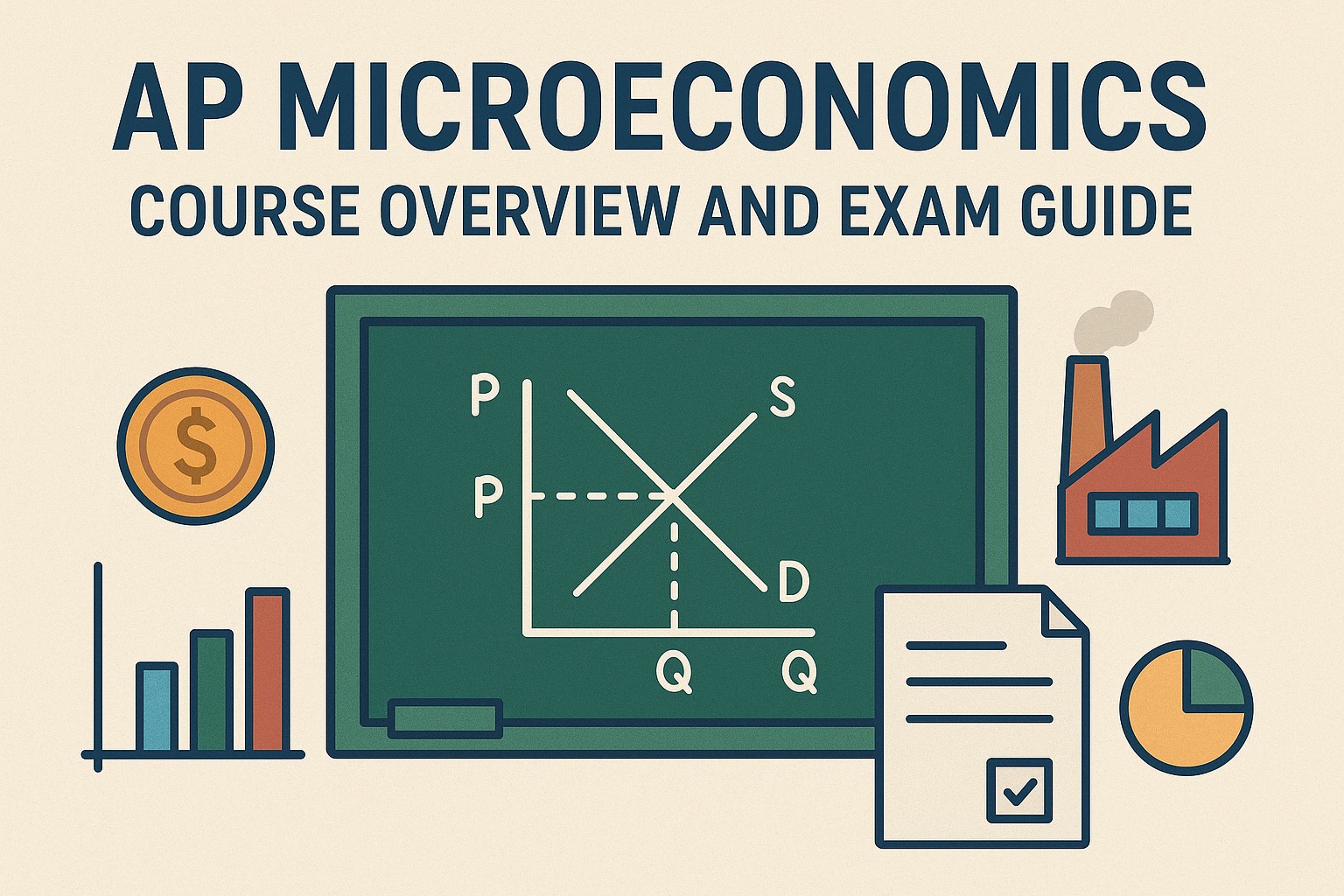What Does the Course Cover?
The course is structured into six key units, each building upon the last. Click on each unit to see the core topics you'll explore, from basic concepts to the intricacies of market structures and failures.
AP Microeconomics is a college-level course that introduces students to the principles of economics that apply to the functions of individual decision-makers, both consumers and producers, within the larger economic system. It's about scarcity, choice, and how markets work. This guide will walk you through everything you need to know.

The course is structured into six key units, each building upon the last. Click on each unit to see the core topics you'll explore, from basic concepts to the intricacies of market structures and failures.
Wondering if this course is the right fit for you? AP Microeconomics is ideal for students with an interest in business, social sciences, or policy. Consider taking this course if you identify with the following points.
You enjoy using models and graphs to analyze situations and predict outcomes. The course heavily relies on analytical and graphical interpretation.
You want to understand how businesses make pricing decisions, how governments intervene in markets, and the effects of those actions.
You plan to major in economics, business, finance, or a related field in college and want a head start on foundational concepts.
You are comfortable with basic algebra and enjoy applying mathematical reasoning to solve real-world problems.
The exam challenges students to apply their understanding of microeconomic principles. It's composed of two sections that test both knowledge and analytical skills. Below is a breakdown of the exam format and the 2023 score distribution to give you a data-driven perspective on its difficulty.
Section I: Multiple-Choice (MCQ)
Section II: Free-Response (FRQ)
A strong understanding of microeconomics opens doors to a wide range of rewarding careers. The principles you learn are directly applicable to fields where strategic decision-making is key. Explore some of the potential career paths below.
Roles like Financial Analyst, Investment Banker, or Portfolio Manager use microeconomic principles to assess firm valuation, market trends, and risk.
Consultants and managers apply concepts of pricing strategy, market structure, and game theory to advise companies and improve business performance.
Economists and Policy Analysts in government agencies use microeconomics to analyze the impact of taxes, regulations, and subsidies on markets.
Data Scientists model consumer behavior and predict demand, applying principles of utility theory and elasticity to large datasets.
Antitrust law, in particular, is heavily based on microeconomic principles of market power, competition, and efficiency.
Actuaries assess risk and uncertainty, concepts that are deeply rooted in the microeconomic study of individual decision-making.
Success in AP Microeconomics comes from consistent effort and smart study habits. Use these strategies throughout the year to build a strong understanding and prepare effectively for the exam.